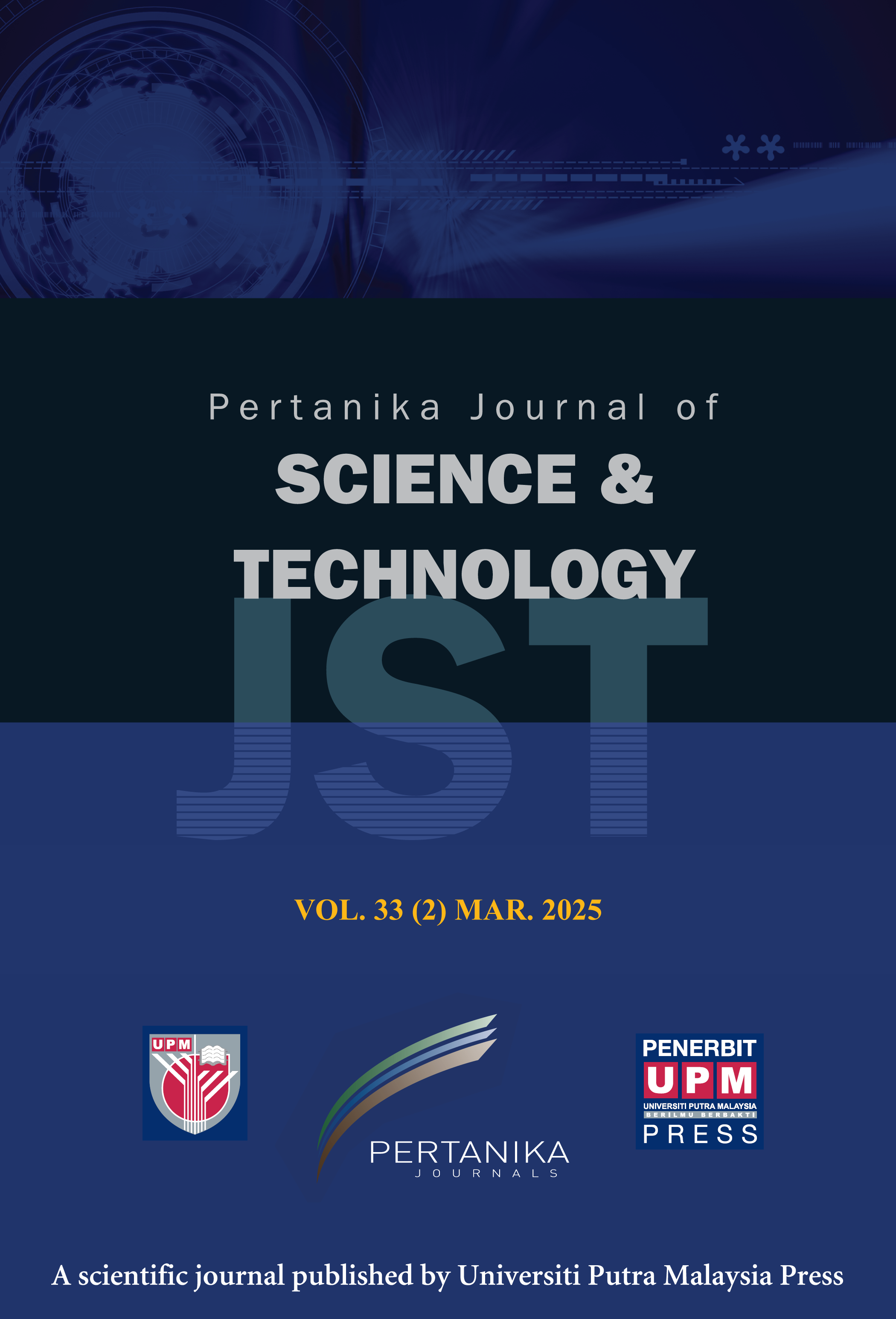PERTANIKA JOURNAL OF SCIENCE AND TECHNOLOGY
e-ISSN 2231-8526
ISSN 0128-7680
Impact of Different Drone Sprayer Nozzle Types on Bio-Fertilizer Application in Wetland Paddy Cultivation
Emmanuel Otache Adanu, Ahmad Suhaizi Mat Su, Azmi Yahya, Siti Amni Ismail, Nik Norasma Che’Ya, Muhammad Huzaifah Mohd Roslim, Abdul Shukor Juraimi, Muhamad Noor Hazwan Abd Manaf and Mst. Motmainna
Pertanika Journal of Science & Technology, Pre-Press
DOI: https://doi.org/10.47836/pjst.33.6.12
Keywords: Climate action, droplet size, foliar fertilizer, Malaysia, spray distribution, spray drift, Zero Hunger
Published: 2025-10-08
The effectiveness and efficiency of chemical spray applications on cropland are strongly influenced by the size of the nozzle. This research study focuses on examining the spray characteristics associated with two different nozzle sizes using bio-fertilizer. The experimentation took place on a 13.85-ha paddy field. To collect spray deposits, water-sensitive papers (WSPs) were strategically placed in a setup consisting of 39 WSPs arranged at distances of 0.5 m apart in three rows spaced 1 m apart. An agricultural spraying drone was deployed at a speed of 3 m/s and a height of 2 m to conduct the tests. Parametric data, essential for both descriptive and inferential statistical analyses, were generated using the DepositScan software. The results of the characteristic test indicated that approximately 50% of the collected droplet sizes were below 89.11±20.59 and 239±78.44 µm for the fine and coarse nozzle sizes, respectively. The coefficients of variation were calculated as 0.27 for the very fine nozzle and 0.85 for the coarse nozzle, indicating varying levels of droplet size uniformity. The t-test analysis revealed a significant difference (P ≤ 0.05) between the two nozzle sizes for all investigated parameters, except for the drift collected within a 30-m distance from the target. Specifically, the fine nozzle type produced very fine droplets with superior spray uniformity, while the coarse nozzle types generated moderate to large droplet sizes. This highlights the critical role of selecting the appropriate nozzle in determining the overall quality of spray applications.
ISSN 0128-7702
e-ISSN 2231-8534
Share this article

